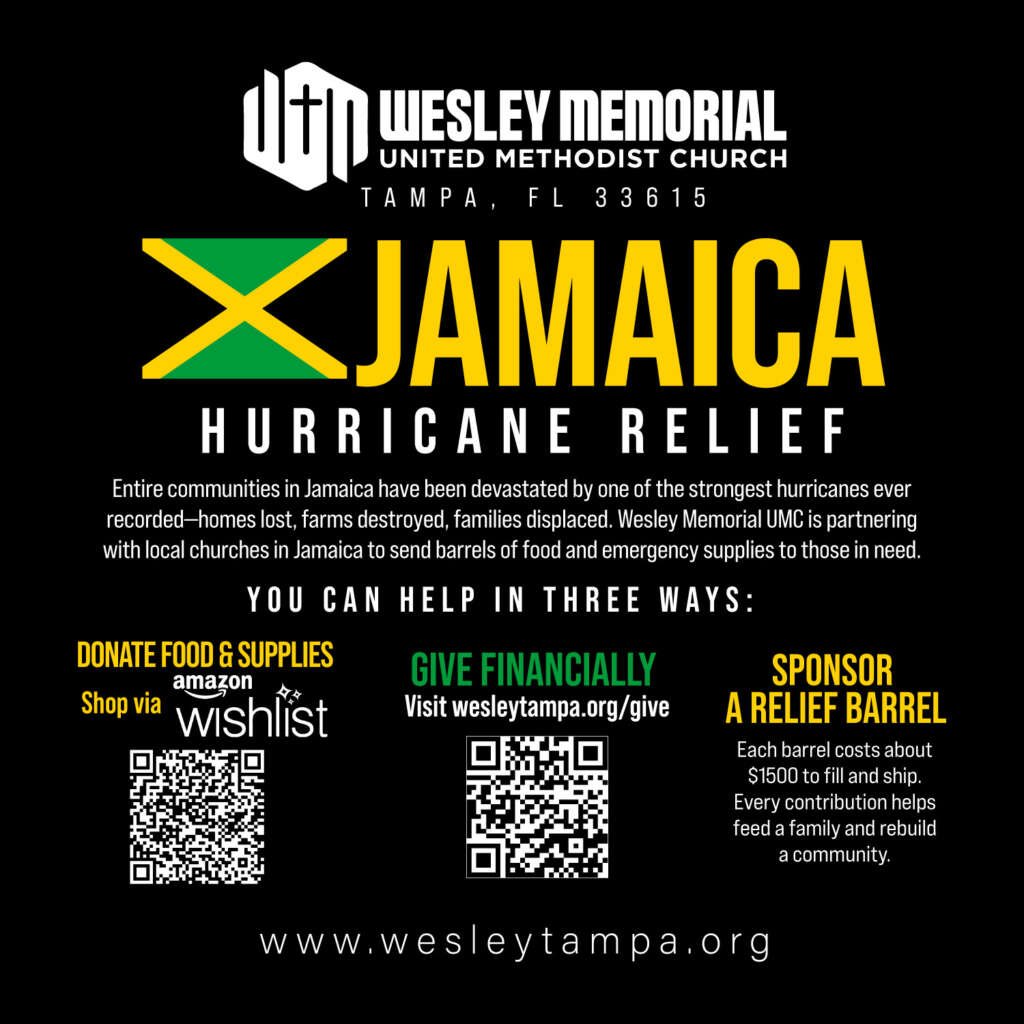
“Gilbert was a baby compared to Melissa,” my father-in-law, Jerral, says through a static phone call from Jamaica the morning after the Category Five hurricane made landfall. He lives in St. Ann—one of the parishes in the direct pathway of monstrous Melissa.
My mind can’t fathom the comparison.
I was six years old in 1988 when Hurricane Gilbert—only a Category Three—ripped through the island. Raging winds lifted zinc roofs, shattered windows, and uprooted entire houses from their foundations.
Our connection is terrible. Jerral’s voice sounds like a cassette tape being rewound and fast-forwarded at the same time. He says he’s climbed to the top of a hill to get a signal, but his words break apart—we hear him only in fragments.
“It will be years before we recover. All the light posts are down. Power gone.”
The memory of living in darkness after Gilbert—of inhaling kerosene fumes from ketchup bottles used as lamps—twists my insides.
“The donkey is drowning,” he yells to someone nearby.
After Gilbert, the stench of dead animals burning in the sun clung to the air for months.
“The cows, goats, and chickens are dead. There is no meat to eat. Not even a yam hill remains.”
I gather that the farms have vanished. There are no leaves or fruit left on the trees.
People are using bed sheets as roofs. They are exposed to the same elements that have proven merciless. Too much sun or a little rain is like adding alcohol to an open wound. They need the sun to dry their mattresses, to harden the mud, to soak up the floodwaters.
The streets have shattered like glass. Roads have turned into riverbeds. Potholes have become sinkholes.
After Hurricane Gilbert, I remember being hungry for months. Aid crawled to the island’s interior. By the time the men threw bags of dried food to us, weevils had already made their home in the flour. Starving, we sieved the black bugs. The dead ones clumped together at the bottom of the strainer. It was a total and utter disaster.
It’s an understatement to say that my heart breaks for those living in the aftermath of Melissa’s monstrosity.
The road to recovery will be long. Fruit-bearing trees and vegetation will take years to grow. Homes and buildings will require time, labor, and resources to rebuild.
Over the next several months, we will be sending barrels filled with food and emergency supplies to Jamaica. Many of you have texted, called, or emailed asking how you can help. There are three main ways to contribute to relief efforts.
Right now, the people are crying out from hunger.
- Amazon Jamaica Relief Wishlist
I’ve created a Jamaica Relief wishlist on Amazon with over forty-four essential items. You can purchase one—or several. Every little bit helps. - Sponsor a Barrel – $1,500
This sponsorship covers all forty-four items on the wishlist, the barrel itself (approximately $100), pick-up fees ($70), shipping from Tampa to Montego Bay ($120), and the cost of clearing customs in Jamaica. - Monetary Donations
You may also give directly through our church’s website under Jamaica Hurricane Relief.
Every gesture of support makes a difference. From my heart—and on behalf of those suffering in Jamaica—thank you, friends.
Likkle Likkle Mek Nuff Nuff is one of my favorite Jamaican sayings. Translated it means, Every little turns into a lot.
Be Well,
Kadine Christie
